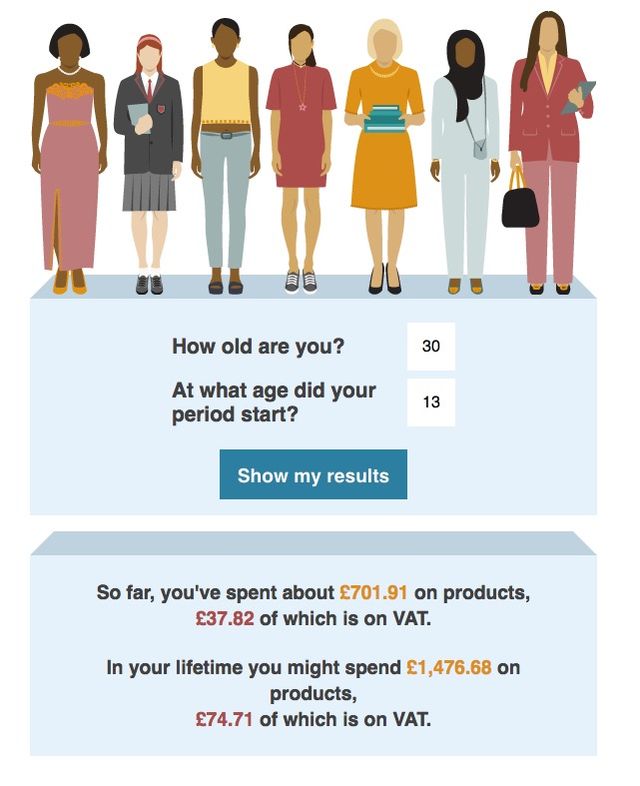The government has been whacking an extra 5% VAT on sanitary products since 1973. Which is extremely kind of them, considering sporadic bleeding is definitely a choice we make every month.
🙄
Last year, after pressure grew to remove the tax, the government promised to donate all tax proceeds towards women's charities which, as it turns out, included giving £250,000 to an anti-abortion group. No, we can't either.
Certain supermarkets also started covering the 5% VAT on sanitary products. But unless you shop in Tesco, Waitrose or Morrisons, you're still being overcharged. And over the years, that 5% tots up.
Want to know how much?
The BBC have very kindly designed a calculator to help you figure out roughly the amount you've spent so far.
They've based the tool on your age and when you started your period, and how much you're likely to pay over the rest of your life.
So a 25-year-old woman who started her period at 13, for example, £23.98 of the £503.60 you've spent on sanitary products so far went towards VAT. In your lifetime, £70.10 of your hard-earned cash will go towards the tampon tax, from your total £1,472.07 spend on sanitary products.
If you're 30 years old and started your period at the age of 13 you've spent £701.91 on sanitary products and £37.82 on VAT.
Then over the course of your life you're expected to spend approximately £1476.68 on products and £74.71 on VAT.
The calculator does make certain assumptions that might not apply to everyone. For a start, it works on the basis that everyone has 13 periods a year within a 28 cycle and that you use 22 tampons or towels per period; and that tampons and towels cost 13p per unit. It also thinks you'll go through, or went through, menopause at 51.
Still, a useful – if slightly bleak – tool.















